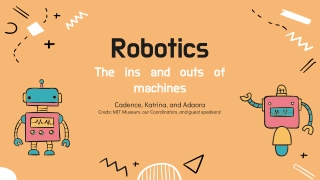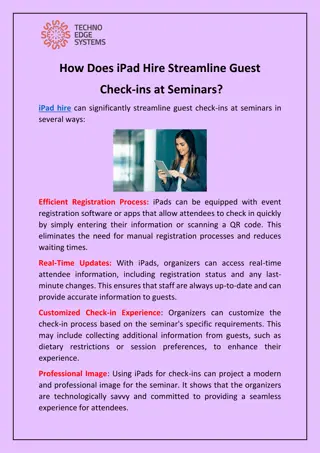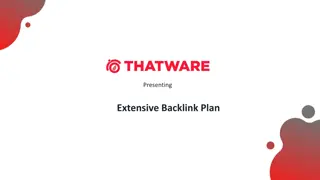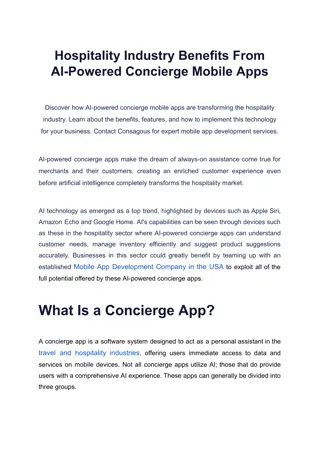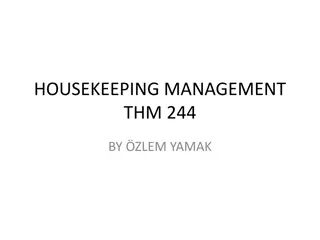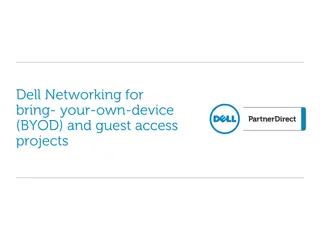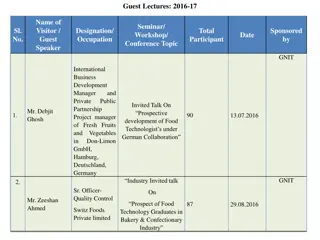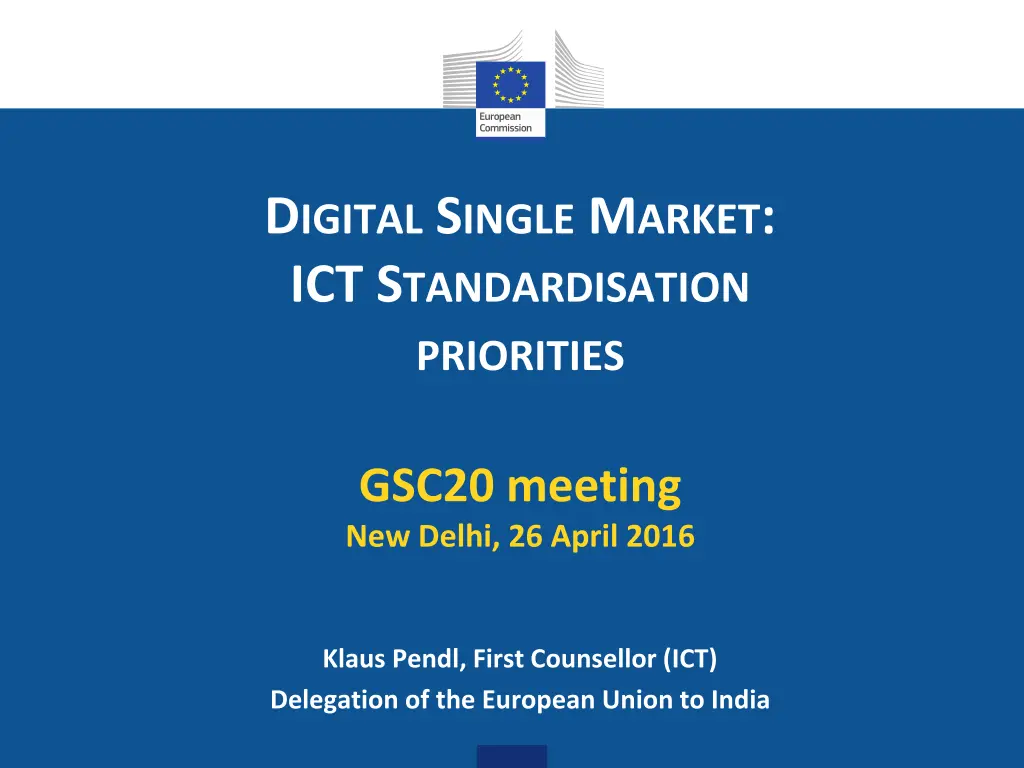
European ICT Standardisation Priorities for Digital Economy
Explore the European Union's ICT standardisation priorities for the digital economy, with key insights on the growth of the digital economy, ICT sector contributions, and strategic initiatives for standardisation efficiency. Learn about the Global Context shaping standards development and the key principles driving industry-led standardisation processes. Stay informed about the ongoing efforts to advance ICT standardisation in the dynamic digital landscape.
Download Presentation

Please find below an Image/Link to download the presentation.
The content on the website is provided AS IS for your information and personal use only. It may not be sold, licensed, or shared on other websites without obtaining consent from the author. If you encounter any issues during the download, it is possible that the publisher has removed the file from their server.
You are allowed to download the files provided on this website for personal or commercial use, subject to the condition that they are used lawfully. All files are the property of their respective owners.
The content on the website is provided AS IS for your information and personal use only. It may not be sold, licensed, or shared on other websites without obtaining consent from the author.
E N D
Presentation Transcript
DIGITAL SINGLE MARKET: ICT STANDARDISATION PRIORITIES GSC20 meeting New Delhi, 26 April 2016 Klaus Pendl, First Counsellor (ICT) Delegation of the European Union to India
DIGITAL ECONOMY DIGITAL ECONOMY 72% of EU individuals uses INTERNET regularly 7% of GDP Size of the digital economy 150 Million subscriptions fixed Broadband ICT in Other Sectors ICT drives 1/3rd EU GDP growth 2001-2011 130 mobile subscriptions per 100 people ICT sector 4.4% 17% of business R&D by ICT sector DIGITAL BUSINESS 6% of Gov't R&D is ICT 38% EU venture capital is in ICT HALF of EU enterprises provide mobile devices for business use 17% EU patents are in ICT 276.5 million EUR turnover of EU B2C eCommerce (2012) ICT professionals 14% of EU SMEs selling online 2.8% of workforce 825 000 estimated demand/supply gap by 2020 28% EU enterprises use Social media 55% + 3-4% yearly employment growth work outside ICT sector 29% of EU enterprises use e-Invoices
ICT STANDARDSFOR DSM: Digital Single Market Strategy (May 2015) announced "integrated standardisation plan to identify and define key priorities ( ) for DSM" European Council (25-26 June 2015) "agreed that action must be taken ( ) to identify and deliver rapidly on the key ICT standardisation priorities" Public consultation (September 2015 January 2016) and advice from stakeholders (MSP) (June 2015 January 2016) Communication"ICT standardisation priorities for DSM" as part of digitising industry package (19 April 2016) identifies priorities 3
GLOBALCONTEXT: Ever faster transition to digital economy Convergence of technologies More complex standards environment & impact on access rights More complex array of SDOs Increasing importance of global efforts & international cooperation Need strategy to raise strategic political interest, better use resources, set priorities, more agility and efficiency 4
KEYPRINCIPLESFORMOREEFFICIENCY: Standardisation will remain industry-led, voluntary and consensus-driven but with clearer priorities for ICT & high- level political process for delivery Need for more cross-sector partnerships and More validation of standards through R&D experiments 5
THERESPONSE = 2 PILLAR-PLAN: 1. Priority setting: identification of priority building blocks for DSM & establish list of deliverables (how, by whom, when) 2. Delivery: high-level political process to validate, monitor progress, and adapt (if necessary) priority list 2 parts of plan need to be pushed together with stakeholders at EU and international level 6
1STPILLAR: PRIORITYSETTING Key building blocks for DSM identified: 5G, cloud computing, IoT, (big) data, cyber-security Will benefit application areas (eHealth, smart energy and cities, ITS and connected & automated vehicles, advanced manufacturing), For each: clear deliverable with deadline and who does what clear set of detailed priorities & list of tasks 7
2NDPILLAR: DELIVERYSTRATEGY European Commission will lead new high-level process to ensure delivery of priorities (building on MSP, ICT rolling plan, etc.) Success depends on high-level commitment from industry, RDI-community, Dos, EU and Member States Detailed delivery strategy: - COM to work with ESO's - Regular monitoring of process - Improve EU support for priorities (H2020, CEF, pilots) - Fair and non-discriminatory access - Stronger EU presence in international for a & cooperation 8
THANKYOU ! https://ec.europa.eu/digital-single- market/en/news/communication-ict-standardisation- priorities-digital-single-market

